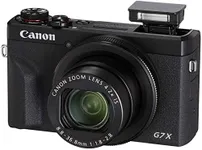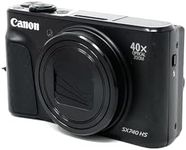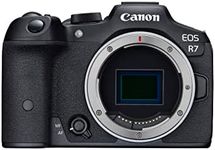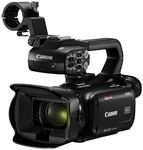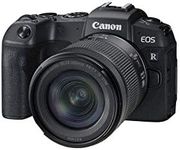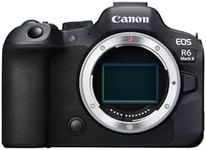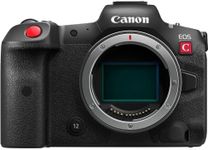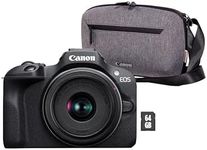Buying Guide for the Best Canon Cameras
Choosing the right Canon camera involves understanding your needs and matching them with the camera's specifications. Whether you're a beginner, hobbyist, or professional, Canon offers a range of cameras to suit different levels of expertise and types of photography. Here are some key specifications to consider when selecting a Canon camera, along with explanations to help you make an informed decision.Sensor SizeThe sensor size determines the quality of the images and how the camera performs in low light. Larger sensors, like full-frame sensors, capture more light and detail, making them ideal for professional photography and low-light conditions. APS-C sensors are smaller but still offer good quality and are often found in mid-range cameras, suitable for enthusiasts and hobbyists. For beginners or casual photographers, smaller sensors like those in compact cameras can be sufficient.
MegapixelsMegapixels refer to the resolution of the camera's sensor, indicating how many millions of pixels the camera can capture. Higher megapixels mean more detail, which is important for large prints or cropping images without losing quality. For most users, a camera with 16-24 megapixels is sufficient. Professional photographers who need to print large images or do extensive cropping might prefer cameras with 30+ megapixels.
ISO RangeISO range measures the camera's sensitivity to light. A wider ISO range allows for better performance in various lighting conditions, especially low light. Cameras with higher ISO capabilities can capture clearer images in dim environments without needing a flash. For general use, an ISO range of 100-3200 is usually adequate. For low-light photography or fast-moving subjects, look for cameras with ISO ranges extending to 6400 or higher.
Autofocus SystemThe autofocus system determines how quickly and accurately the camera can focus on a subject. More autofocus points and advanced tracking features are beneficial for capturing fast-moving subjects, such as in sports or wildlife photography. Beginners and casual users can manage with basic autofocus systems, while enthusiasts and professionals might prefer more sophisticated systems with numerous focus points and advanced tracking capabilities.
Video CapabilitiesIf you plan to shoot videos, consider the camera's video capabilities. Look at the resolution (e.g., 1080p, 4K) and frame rates (e.g., 30fps, 60fps). Higher resolutions and frame rates provide better video quality and smoother motion. For casual video recording, 1080p at 30fps is usually sufficient. For more professional video work, look for 4K resolution and higher frame rates.
Lens CompatibilityCanon cameras come with different lens mounts, such as EF, EF-S, and RF. Ensure the camera you choose is compatible with the lenses you plan to use. Full-frame cameras typically use EF or RF lenses, while APS-C cameras use EF-S lenses. Consider your future needs and whether you might want to expand your lens collection.
Build Quality and ErgonomicsThe build quality and ergonomics of a camera affect its durability and how comfortable it is to use. Professional cameras often have weather sealing and robust construction to withstand harsh conditions. For casual use, lighter and more compact cameras might be preferable. Hold the camera to see how it feels in your hands and consider the layout of the controls.
ConnectivityModern cameras offer various connectivity options like Wi-Fi, Bluetooth, and NFC for easy sharing and remote control. These features can be very convenient for transferring photos to your smartphone or controlling the camera remotely. If you value instant sharing and remote operation, look for cameras with these connectivity options.


